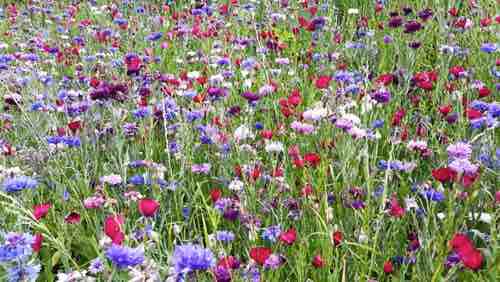Featured
Posted by Kathy Brodie on February 12, 2017.
Kathy Brodie on February 12, 2017.

Dr John Siraj-Blatchford is a well-known name in Early Childhood research and a staunch advocate for improving the outcomes for young children. I have read a lot of his writing, but one article caught my eye when preparing the Early Years Summit – Wellbeing and Sustainable Development. Co-authored with Lynette Brock – a passionate supporter of play for children – the article explores how sustainability and integrated cross-generational initiatives are essential to improving children’s wellbeing and welfare.
This was a fresh perspective on children’s wellbeing that I’d not come across before, but which made a lot of sense. So I was delighted when Dr Siraj-Blatchford and Lynette Brock submitted the guest blog post below, linked to this very subject!
At the end of the blog post, you will find a link to the original article, along with links to other, free articles, and details of training sessions and conferences.
Education for Sustainable Citizenship in Early Childhood
by Dr John Siraj-Blatchford and Lynnette Brock.
Education for Sustainable Development is about Environmental Education, it is about Global and Intercultural education, and it is about the Economics of wellbeing and the virtue of thrift. Most important of all, Education for Sustainable Development is also about improving the learning outcomes of children who are currently underachieving. Inequality and underachievement provide a significant barrier to sustainable development and this has been identified as a major priority in the United Nations Sustainable Development Goals. References are provided at the end of this posting to free to download resources that provide more detailed explanations and rationale.
Education for Sustainable Citizenship in Early Childhood (ESCEC) draws upon the logic of the Convention on the Rights of the Child which requires us to consult the child on all matters that affect them. In fact their future is the central concern of Sustainable Development, and we therefore believe they should be given a voice in determining this future. From the ESCEC perspective it is important for children to learn about the interdependency of humanity and nature, and about their interdependency with other people near and far. But it isn’t enough just to learn about the efforts being made in achieving a more peaceful and sustainable world, in adopting a ‘rights’ perspective it is clear that children also need to be involved in contributing to these efforts.
Featured
Posted by Kathy Brodie on January 20, 2017.
Kathy Brodie on January 20, 2017.

It seems particularly apt to have a post from Mrs M. about the different faces of anxiety in January, as this month is often linked with the Janus, the Roman God of war and peace or the beginning and end of conflict. In this guest blog, Mrs M. describes how we can recognise the signs of anxiety in children with autism, and then some really practical strategies for managing anxiety. It is an honest and inspirational piece. Please do share and comment.
Enjoy!
For my son, anxiety is part of who he is.
In fact, it is as much a part of his make up as the colour of his hair or the freckles on his nose that come out every summer. It is his constant companion and is far more than just a bit of worry that can be soothed away with some reassuring words of encouragement.
It is with him forever, and it is important we take it seriously as it plays such a huge part in his life.
It was also actually one of the first indicators to us as he was growing up, that something wasn’t quite as it should be. The older he got the bigger his worries seemed to grow. But at the time we didn’t realise that all the different behaviours we were seeing were driven by this hidden force lurking inside him. And the more we tried to overcome it and force him into situations that we thought he should be able to cope with, the worse we made it; because we didn’t take his anxiety seriously. We didn’t realise how much his anxiety was controlling his emotions and behaviours.
So we bowed down to pressure.
Pressure to make him conform because he looked so ‘normal.’ Pressure from professionals who didn’t have the answers we were so desperately seeking. And pressure from ourselves to live up to the perfect family image that everyone expected us to be.
Pressure to fit our son into societies neat little boxes.
But in fact, we quickly learnt that the key to us being able to move forward as a family unit was far more about us learning to accept and embrace his differences as much as anything else. Learning to accept that his anxiety was part of who he was, and it wasn’t going anywhere. And after all that we had to learn how to unpick his behaviour to see what was really going on underneath the surface.
And so out of necessity his anxiety became our constant companion. We have reluctantly learnt to share our lives with it, having to let it into our routines and family time. Allowing it to dictate the ebb and flow of daily life like the tide. It’s inevitable when your child has anxiety linked with their autism, there is no hiding from it…ever! So, we learnt to accept that it is part of what makes him so unique and roll with it.
Sometimes we can all see his anxiety, even people that don’t know him inside out like I do. It is etched on his face, in his body language and it seeps out of every muscle in his movements. There’s no mistaking it. It controls him like a puppet master making him bite his nails, compels him to ask the same questions again and again with nothing being able to satisfy its hunger. It makes him pace around the room like a caged tiger, and at times it completely takes over his body. Primal instincts kick in which trigger the fight or flight reflex in his body.
But this anxiety also has a darker more secret side.
Featured
Posted by Kathy Brodie on January 13, 2017.
Kathy Brodie on January 13, 2017.

 Artist and qualified teacher, David Veron invented a creative construction toy for his wife’s daycare nursery in 2015. Realising its potential he offered it to nurseries and schools near his hometown of Otley in Yorkshire. By the start of the second year began exporting across Europe and as far away as The Falkland Islands. The construction toy he called u-nu has now been enjoyed by thousands of young children.
Artist and qualified teacher, David Veron invented a creative construction toy for his wife’s daycare nursery in 2015. Realising its potential he offered it to nurseries and schools near his hometown of Otley in Yorkshire. By the start of the second year began exporting across Europe and as far away as The Falkland Islands. The construction toy he called u-nu has now been enjoyed by thousands of young children.
David has kindly written this guest post about some of the things he has learned about how children use construction to further their learning, imagination and design skills.
I’m now approaching the end of my second year exploring the subject of early years construction and I’m finding out all sorts of interesting data.
There can be little doubt that early years construction is a vital part of how we encourage children to explore the world around them. By combining different kinds of construction materials, both bought and found, and making them available in an area of continuous provision, we offer children the opportunity to develop a diverse range of skills, from creativity to collaboration – from gross and fine motor skills to numeracy.
It goes without saying that we should also take an holistic approach to their learning, and where children are engaged in one activity, we as practitioners need to remain aware of the opportunity to introduce elements from their other experiences.
Take for example the activity of building a tower. This could relate to a book that has recently been read to the children, let’s use for example the classic story of Rapunzel.
What if we then introduce some small world toys and engage with the child to recount the story, asking them questions about how Rapunzel feels being trapped up in a tower. They may wish to subvert the story and to take ownership of the narrative. This in turn may feed back to redesigning the original structure of the tower to provide Rapunzel with her own means of escape.
Featured
Posted by Kathy Brodie on December 14, 2016.
Kathy Brodie on December 14, 2016.

I am super excited to tell you that Mrs M. has written a special Festive blog for us, full of her usual great practical advice and top tips. I love Mrs M’s writing because I can really relate to it (I get a wiggly tummy sometimes too!) and it always makes me smile, but most of all, she has a great knack of emphasising the positives – perfect for the holiday season! I hope you enjoy it as much as I have.
Hi folks, it’s lovely to be back doing another guest blog for Kathy after what has been a hectic few months in our household I can tell you.
I ended up having to take a few months off from writing. So, for those of you waiting for my series of blogs to continue in which I have been looking at supporting children with autism in the classroom, don’t worry I’ll be back in the swing of things by January with my next instalment as promised. In it I will be looking at managing anxiety in the classroom, and how unmet sensory needs can lead ‘challenging behaviour.’ Keep an eye out for that one in the new year, and apologies for my absence these last few months…what can I say? Sometimes life just has a habit of getting in the way at times doesn’t it!
Anyway, back to the here and now and I can’t believe as I am sat here writing this how quickly we’re hurtling towards Christmas. And I don’t know about you, but for me, this is the time when panic usually starts to set in as I realise how much I still have left to do in the coming few weeks.
The shopping, wrapping, unexpected guests, decorations, school concerts, parties… I mean the list goes on and on. If I allow myself to dwell on it all too much little wave of nausea washes over me as I stress about the Christmas cards write yet and how on earth I am going to manage to be in three places at once next Wednesday as my kids school commitments ramp up by the day.
So, let’s take a deep breath and pause from the Christmas chaos for just a minute.
Featured
Posted by Kathy Brodie on November 13, 2016.
Kathy Brodie on November 13, 2016.

Kim Benham is an incredibly reflective practitioner, as evidenced by her Twitter feed and attendances at events. I can also personally attest to this as we have corresponded often on prevailing Early Years issues or thoughts arising from a blog post.
During one of these exchanges, Kim mentioned her past as a paediatric nurse – and I knew immediately there was a story that I’d like to hear!
So, she has very generously written this blog about some of her experiences and how they have influenced her over the years. It is a fascinating insight into a totally different Early Years. I think it is a sensitive reminder that every family is different and that assumptions may be dangerous. An excellent piece of reflection! Enjoy!
I’d like to thank Kathy Brodie for inviting me to write this blog for a website. I have loved listening to the Online Early Years Web Summit. One of the recurring themes was to interfere less and make interactions meaningful by using powers of observation more. 
Not a lot of my Early Years friends know that after initially training as a Nursery Nurse, I then re-trained, and spent fifteen years as a paediatric nurse. Then my own children came along, and I returned to Early Years, as they became Pre-Schoolers.
I recalled a story to Kathy about when I went back into Early Years; I definitely had a case of verbal Tourette’s that Alistair Bryce-Clegg talked about in his Summit interview. I remember the manager saying “Let them eat!” As I quizzed them over how many sandwiches they had, what shape they were, why was cheese good for you? Poor children couldn’t answer, they were eating!
Featured
Posted by Kathy Brodie on October 21, 2016.
Kathy Brodie on October 21, 2016.

Guest Post By Ursula Krystek-Walton Regional Early Years Manager
At Bertram Nursery Group, we have always known how important it is to promote physical development as a way of supporting children’s healthy growth; both physically and mentally, and the need for regular movement as an obvious means to keep fit, support children’s wellbeing, build their confidence and alleviate frustration. As such, we were delighted when Physical Development became a prime area within the Early Years Foundation Stage.
 It was not, however, until we became associated with Sharon Skade of GreaterSport, that we really began to consider just how vital physical development is in promoting all the other areas of learning right from birth.
It was not, however, until we became associated with Sharon Skade of GreaterSport, that we really began to consider just how vital physical development is in promoting all the other areas of learning right from birth.
Following Sharon’s training at individual settings, managers and their teams began to consider ways to incorporate more and more gross and fine motor physical development in their routines, activities and environments and we began to see some really positive results. Improvements in behaviours were noted in some settings, as well as children concentrating for longer periods of time.
Practitioners became conscious of letting children persevere with tasks rather than jumping in to help too soon, which allowed children to strengthen different muscles and of course, supported children’s independence. 
We began to observe the effectiveness of placing a high priority on Physical Development.
Featured
Posted by Kathy Brodie on September 22, 2016.
Kathy Brodie on September 22, 2016.

 I was introduced to Mine Conkbayir when she contacted me about neuroscience informing early years practice, which I think is such an exciting, and growing, area of study. So I was very enthusiastic when she offered to do a guest post on this subject. Here she discusses how neuroscience can add another dimension to our understanding of child development:
I was introduced to Mine Conkbayir when she contacted me about neuroscience informing early years practice, which I think is such an exciting, and growing, area of study. So I was very enthusiastic when she offered to do a guest post on this subject. Here she discusses how neuroscience can add another dimension to our understanding of child development:
Like many individuals in this increasingly frantic world, I’m often busy juggling my responsibilities as a parent while I work and continue my studies – a very exciting journey as I try to achieve my PhD in early childhood education and neuroscience.
Having been a lecturer across a range of child care and education qualifications for the past 14 years, I continue to be bewildered by the lack of consistently embedded teaching of neuroscience and early brain development across these qualifications.
Early years students and practitioners are continually being encouraged and supported by lecturers and training professionals to use theoretical knowledge from the likes of Piaget, Vygotsky and Bowlby to help inform their planning of early childhood curricula, learning environments and their interactions with very young children.
However, this is not the case when it comes to using neuroscience, which can also be used to inform their understanding of early brain development in relation to their practice.
Featured
Posted by Kathy Brodie on July 11, 2016.
Kathy Brodie on July 11, 2016.

Mrs M continues her blog series with advice on working in a classroom with a child who has autism. She has enormous personal experience, which you will see shining through in the post, as well as very practical advice. Please do share any top tips that you have as well! – Kathy
Mrs M. writes:
Before I dive straight in with the practical tips in this month’s blog. I want to talk a little bit about my past experience, as it has shaped my whole ethos in relation to autism within the classroom.
I am a mum to a 12 year old boy who was diagnosed on the autism spectrum several years ago now. And my background as far back as I can remember is in nursery management. But as my kids became older I made the move into a primary school setting, and I soon discovered my calling as an Autism HLTA in a resourced provision.
My career path hasn’t always been plain sailing let me tell you.
I can remember like it was yesterday my first job supporting an autistic child in reception. Because despite all my training nothing could prepare me for the rollercoaster of emotions I was about to experience working alongside him.
He had almost no language and huge sensory needs. He found the transition from home to school very difficult, which would lead him to become very upset every day.
So for a while I felt totally out of my depth.
I remember feeling so worried about getting it wrong, that it stopped me being innovative and thinking outside the box. I had an awful feeling that I just wasn’t up to the job. I couldn’t seem to ‘connect’ with him.
The worry and feeling of inadequacy would keep me awake at night sometimes.
On days when he had particularly struggled, I would feel mentally and physically drained. I saw it as my fault. I felt like a failure as I didn’t feel like I was actually ‘teaching’ him anything.
But slowly, day by day I quickly learnt that this little boy was actually the one teaching me, as much as I was there to teach him. In order to enable him to learn, I had to get into his world and see things from his viewpoint.
Featured
Posted by Kathy Brodie on May 24, 2016.
Kathy Brodie on May 24, 2016.

I’m delighted to announce that Mrs M (author of A Slice of Autism: What’s normal anyway?) is starting a new series of blogs for me here. The first one focuses on behaviour, particularly with respect to school and parent partnership. You’ll find plenty of sensible, reliable advice, written in Mrs M’s very enjoyable style.
*******************
I have been privileged to spend many years of my career working within the primary education sector and early years settings to support staff who work with children on the autism spectrum. It can be one of the most rewarding jobs and yet also one of the most challenging too, as each individual child on the spectrum is unique, and therefore they all have such different needs.
Add to this the fact that many children’s challenges are hidden from the outside world and it becomes easy to see why people can focus on the things children with autism can’t do, their deficits if you like. Instead of us looking at the child behind the behaviour, we can find ourselves stuck in a cycle of negative reaction strategies that actually serve to aggravate the child even further.
 Many approaches I have seen over the years tend to ‘treat the behaviour’ and focus on the child’s problems. But we should be taking the time to find out what makes these very special children tick, what their strengths are, how they learn, and how we can make reasonable adjustments to the environment in order to meet their needs.
Many approaches I have seen over the years tend to ‘treat the behaviour’ and focus on the child’s problems. But we should be taking the time to find out what makes these very special children tick, what their strengths are, how they learn, and how we can make reasonable adjustments to the environment in order to meet their needs.
So often children on the spectrum are treated like round pegs in square holes. Our environment and demands to conform to our view of the world can chip away at them and doesn’t take into account their individual needs. (more…)
Featured
Posted by Kathy Brodie on April 5, 2016.
Kathy Brodie on April 5, 2016.

Spring is certainly in the air now. My poor daffodils have coped with snow, gales and hailstones – but have come out the other side bright and sunny.
It is a time of year for marvelling at nature and giving thanks in many ways, so Mrs M.’s blog this month is suitably Spring-like. You’ll she has had an amazing year, and I hope that you’ll join me in congratulating her on her achievements, (including her book publication) as well as anticipating the new things to come.
As I sit here writing this, the spring sun is piercing through my window and the birds are chirping away in my back garden. New life is popping up all around me, and I have to say that I am excited at what the coming months have in store.
Yet naturally this also makes me reflect on the last 12 months as it’s been a heck of a ride.
So I’m gonna sit down with a nice cuppa and reminisce…
Let’s see, well my son has settled into his new school. He is happy and flourishing there and as a result he is much happier at home. I can’t believe how calmer he is now, and his generalised anxiety is under control. Fighting for the school he now attends was one of the best decisions we ever made.
My two girls are happy and growing up too fast. They amaze me every day with how independent they are becoming. I am learning to let go of the apron strings a little with them (being a mum to teenagers is a much of a challenge for me as it is for them I think).
The hubby is happy in the new ‘man shed’ he’s been building that the bottom of the garden these last few months. I see less and less of him as his man cave grows ever bigger! He pops in every now and again for a fresh cup of tea and a biscuit. But as he’s reached 40 his passion for fast rides and adrenalin seems to have been replaced by tools and drill bits?!
And me… (more…)
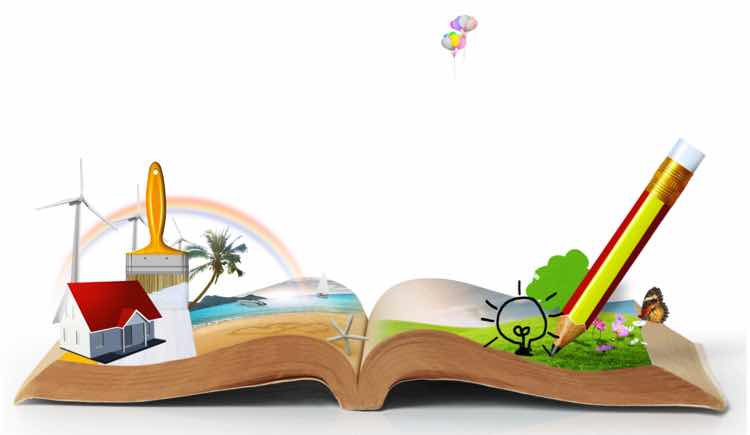



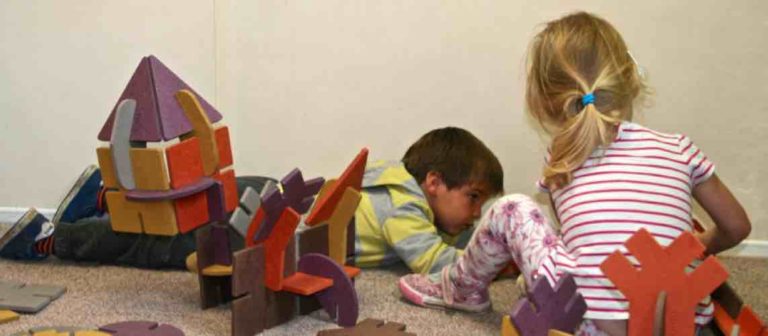
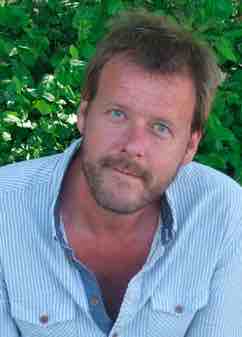 Artist and qualified teacher, David Veron invented a creative construction toy for his wife’s daycare nursery in 2015. Realising its potential he offered it to nurseries and schools near his hometown of Otley in Yorkshire. By the start of the second year began exporting across Europe and as far away as The Falkland Islands. The construction toy he called u-nu has now been enjoyed by thousands of young children.
Artist and qualified teacher, David Veron invented a creative construction toy for his wife’s daycare nursery in 2015. Realising its potential he offered it to nurseries and schools near his hometown of Otley in Yorkshire. By the start of the second year began exporting across Europe and as far away as The Falkland Islands. The construction toy he called u-nu has now been enjoyed by thousands of young children.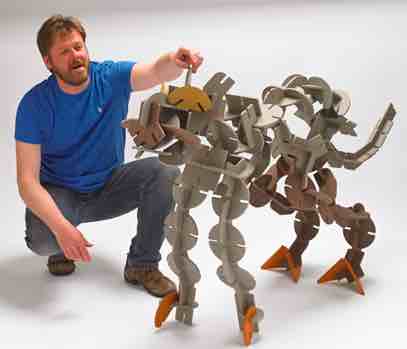
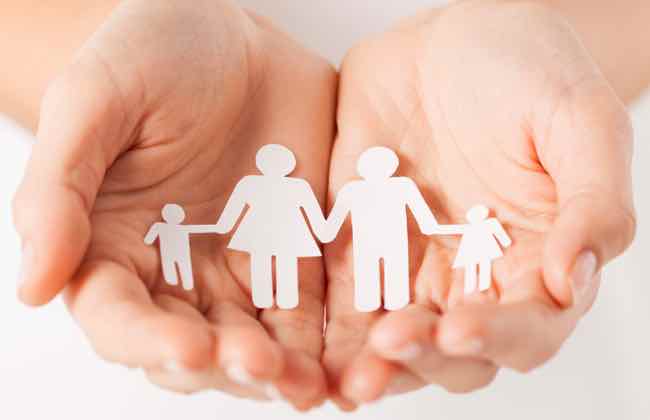
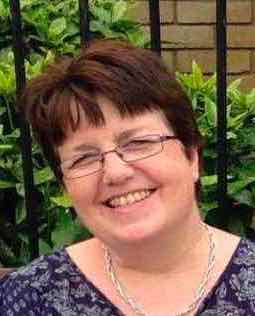
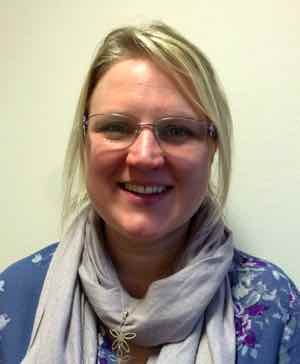
 It was not, however, until we became associated with Sharon Skade of GreaterSport, that we really began to consider just how vital physical development is in promoting all the other areas of learning right from birth.
It was not, however, until we became associated with Sharon Skade of GreaterSport, that we really began to consider just how vital physical development is in promoting all the other areas of learning right from birth.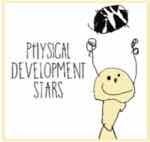

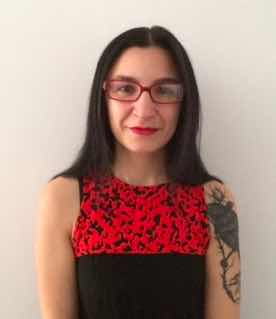 I was introduced to Mine Conkbayir when she contacted me about neuroscience informing early years practice, which I think is such an exciting, and growing, area of study. So I was very enthusiastic when she offered to do a guest post on this subject. Here she discusses how neuroscience can add another dimension to our understanding of child development:
I was introduced to Mine Conkbayir when she contacted me about neuroscience informing early years practice, which I think is such an exciting, and growing, area of study. So I was very enthusiastic when she offered to do a guest post on this subject. Here she discusses how neuroscience can add another dimension to our understanding of child development: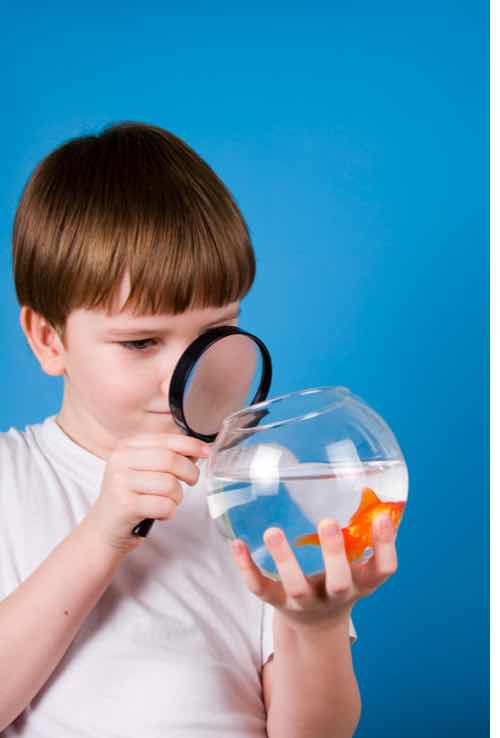 Many approaches I have seen over the years tend to ‘treat the behaviour’ and focus on the child’s problems. But we should be taking the time to find out what makes these very special children tick, what their strengths are, how they learn, and how we can make reasonable adjustments to the environment in order to meet their needs.
Many approaches I have seen over the years tend to ‘treat the behaviour’ and focus on the child’s problems. But we should be taking the time to find out what makes these very special children tick, what their strengths are, how they learn, and how we can make reasonable adjustments to the environment in order to meet their needs.